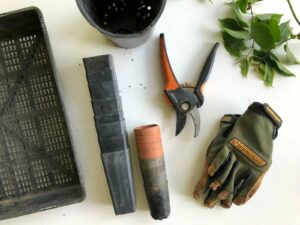
Discover how to take care of your native plants during fall and winter!
Now that our first snow of the season is behind us, you may be thinking that your gardening days are truly done for the year. But not so fast! There are gardening activities that you can do all year, especially for native plants. Read on for steps to follow this off-season to grow your native plants next year.
Locals
It seems like native plants should be easy to grow, since they’re in their natural habitat, with all of their natural pollinators and seed dispersal mechanisms. The unfortunate truth is that many seedlings in the wild won’t make it. They are often crowded out by non-native plants and those that aren’t get labeled as ‘weeds’ and mown down repeatedly or served a helping of weed killer. If you want native plants for your garden, start them as seeds, rather than waiting to try to harvest established plants in the spring.
Winter Your Seeds
Many native plants in this area are designed to survive the harsh winters we often get. The seeds take on moisture and then freeze and thaw in the winter and early spring, which causes their outer seed coats to break up. This is the signal for the seeds to germinate once it is warm enough for the young plants to survive. Collect your seeds and place them in a tray, seed flat, or even a plastic takeout container (as long as it has a clear lid). Make sure that the containers have ventilation and drainage holes and a sturdy lid that will keep the seeds safe from winter foragers. If there isn’t a lid, cover them with hardware cloth. Fill them with a few inches of good seeding mix and leave them outside by your winter garden for the winter.
Wait for Spring
When the warmer weather of spring arrives, the seeds will know what to do. On very warm days, you can take the tops off of the containers, but remember to keep them moist (bottom watering the containers is best). Also, remember that the lids should go back on to protect the tender new plants from cold spring nights. The seedling roots should reach the bottoms of the containers by late spring, which is when the time is right to transplant them. You can replant the younglings into larger containers or into garden beds, depending on your preference, but remember to keep them well watered for the first season.
Do Your Homework
Remember that this is a general guide, and not all plants are alike. Some species will germinate after one winter, but others need more than one season of freeze-thaw. Research your native plants online or come in and talk to us about them.
VISIT AMERICAN NATIVE PLANTS
Whether you’re looking to restore a local wetland or beautify your property, American Native Plants can provide you with the right plants for the job. With an inventory of over 400,000 native trees, native shrubs, and herbaceous plants consider American Native Plants your one-stop shop for wholesale native plant needs. Peruse our catalog, give us a call, and follow us on Facebook, Twitter, and Google+!
